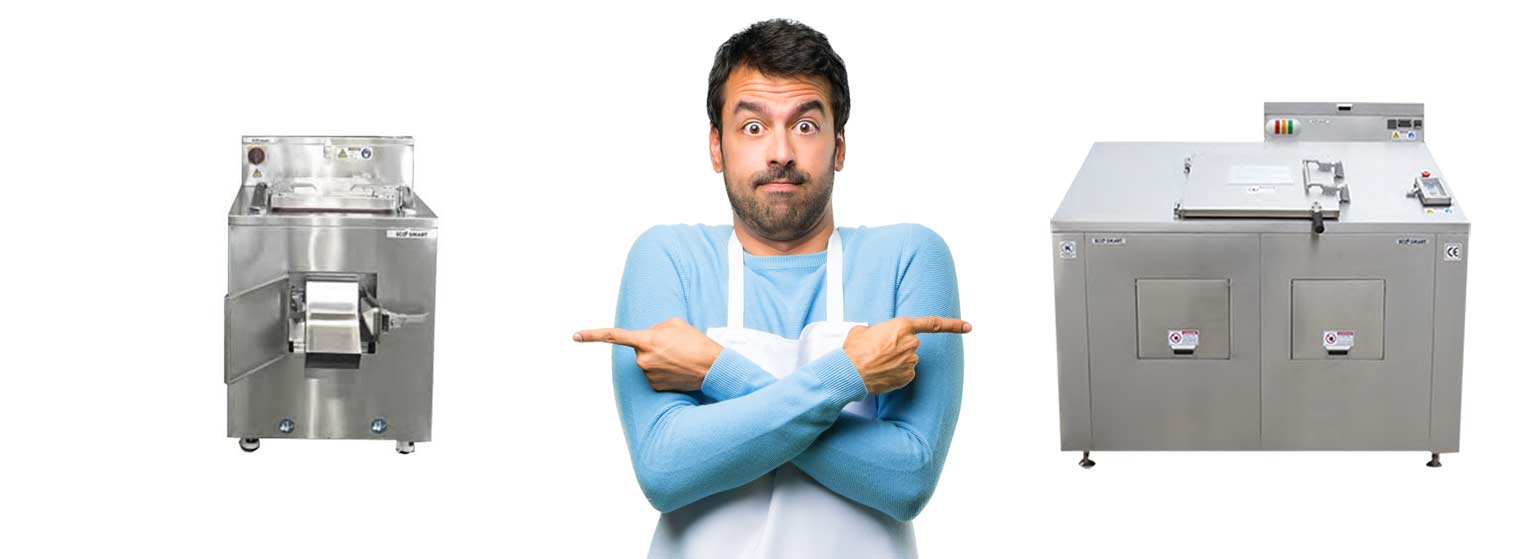Choosing the Right Model for Your Organisation

The right machine, or machines for your organisation depend on the weight of raw waste generated and the operating hours of your kitchens.
How Much Food Waste Do You Produce?
If you don’t have accurate figures, you should weigh your food waste over a seven-day period and extrapolate the figures. Don’t rely on estimated weights in wheelie bins, as in our experience, these vary hugely and often give a misleading impression. You need to look at the busiest day of the week and choose the model which can cope with this weight with some headroom as it is never a good idea to have any machine working at full capacity.
What Type of Food Waste Do You Generate?
The Eco-Smart takes any type of food waste (except large knuckle bones) and works best on a mix of food waste types. For example, a typical catering kitchen will have a variety of food waste from preparation and from left-overs. This is perfect. Starchy waste such as bread, pasta, rice and potatoes should be kept to a 30% maximum ideally. You can still use the machine for predominantly one type of waste such as vegetables or meat but bread dough on its own could be a problem. Speak to us if you think your food waste profile is unusual and we can advise.
Daily Batches – Dried Overnight
The Eco-Smart is a batch-drying unit. Only start the drying cycle when it is full or when you are ready to run an overnight cycle. Do not load any additional food waste once the cycle has started. The unit will switch off automatically when the cycle has ended, typically 12 to 18 hours later, depending on the fill level and the profile of the food waste. Higher proportions of liquid and starch can tend to increase the drying time.
Kitchen Operating Hours vs. Weight of Food Waste
Most customers choose a unit which will handle the daily weight of food waste with some headroom so the machine is not full to capacity each time. The product data sheets will tell you the typical drying time for different fill levels. You will not be able to empty the machine until the drying cycle has finished. Sometimes customers want to split their volume across two smaller machines, particularly if kitchen opening hours are long and they want a machine available all the time to load. Lets say you generate 180kg of food waste a day: that would suggest that you need an ES300 unit (maximum capacity 200kg). The cycle time of the ES300 with 180kg would be around 17 hours, so if it is switched on at 6pm, it will not complete the drying time until around 11am the following morning. If you want to fill a machine from early the next morning with breakfast and kitchen waste and you are not prepared to wait until the cycle has finished, you would be better to have two ES150 units, and split the volume across each unit, rotating their use so that while one machine is drying, the other is being filled.
For More Information
We have extensive experience dealing with food and other waste in hotels and restaurants and can come to your premises to discuss your problems and objectives, and how our Eco-Smart Food Waste Dryer can meet and solve them.

Download Your Guide To The New Food Waste Disposal Rules In England
The Problems of Traditional Food Waste Disposal Methods
The Immediate Benefits of the Eco-Smart Food Waste Dryer
How the Eco-Smart Food Waste Dryer Works
Choosing the Right Model for Your Organisation
What Happens to the Dried Powder?
Installation and Commissioning
Maintenance and Servicing
